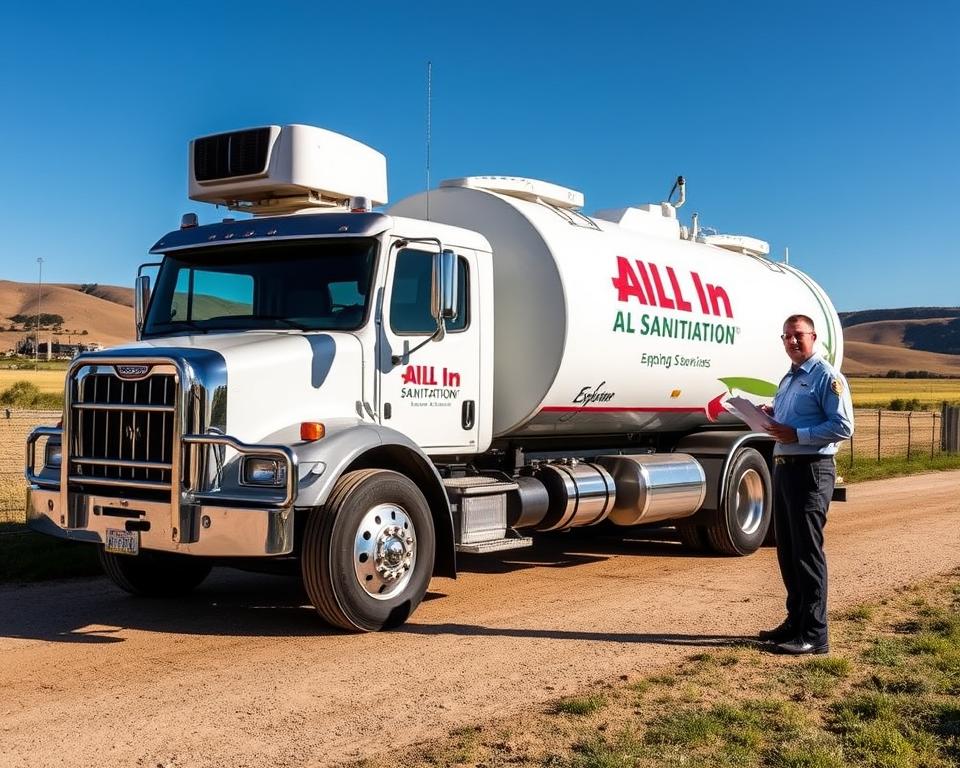Waste System Clean Expense: Latest Prices & Elements
Did you know that about 25% of U.S. households use onsite sewage systems for sewage treatment, especially in rural areas? This fact demonstrates how important it is to understand the cost of septic system pumping. The cost can change a lot, depending on several important factors that property owners should be conscious of. Keeping up with servicing, like emptying, is key to stopping expensive repairs later and ensuring your system running well.
In this guide, we’ll examine what influences the expense of septic system pumping. We aim to help you prepare for this essential part of homeownership.
Comprehending Sewage Tanks
A onsite sewage system is essential for homes without city sewage, especially in countryside. Understanding how it works helps residents take good care of it.
What is a Onsite Sewage System?
A septic system is a distinct configuration beneath the ground. It has a holding tank, a distribution box, and a leach field. Effluent goes into the container to dissolve and divide. It’s essential for property owners to understand how it works for cleanliness.
How Does a Septic System Work?
First, wastewater goes into the holding tank. There, solids settle to the bottom as residue, while fats and oils ascend to the top. The effluent then moves to the absorption field, where ground filters out impurities. This keeps the ecosystem clean and water clean.
Importance of Frequent Servicing
Keeping a sewage tank unclogged is essential to stop problems. Professionals say to empty it every 2-3 years using septic tank pumping near me, depending on how much it’s operated and the home’s dimensions. Routine maintenance stops blockages and backups, allowing the system persist longer. Knowing about onsite sewage systems aids in maintaining it, keeping people and the planet clean.
Elements Influencing Sewage Tank Cleaning Expense
Knowing what affects septic system pump cost is crucial for residents. It aids with budgeting for maintenance and keeping sewage tanks functioning well. Key elements involve the size of the sewage tank, how often it demands emptying, and your location.
Volume of Sewage Tank
The volume of the septic tank is a significant determinant in emptying charges. Larger tanks require more time and work to empty, causing them more expensive. Property owners should select the right size based on their household size to handle expenses over time.
Pumping Interval
How often you pump your onsite sewage system also determines expenses. Pumping consistently assists avoid backups and high-priced repairs. It’s wise to follow a pumping plan that matches your tank capacity and home use to keep your system functioning effectively.
Geographic Location and Cost Differences
Where you live can affect how much you spend for septic tank emptying. Rates might be greater in cities because of elevated expenses, and less in rural areas. Homeowners should research area rates to ensure they allocate funds right for onsite sewage system services.
| Element | Explanation | Expense Effect |
|---|---|---|
| Tank Capacity | Volume of the tank affects the amount of waste that can be held. | Greater capacity tanks cause increased cleaning costs. |
| Pumping Interval | The interval at which the holding tank is emptied. | Consistent cleaning can prevent higher future costs. |
| Location | The region where the pumping is conducted. | Expenses may vary substantially between city and rural regions. |
Common Prices for Septic Pump Services
Residents with sewage tanks require the common prices for sewage tank cleaning. Rates can fluctuate a lot influenced by different determinants. Knowing this can assist with budgeting and cost management.
Usual Span for Septic Pumping
The cost to clean a sewage tank usually is between $300 to $700. This depends on the tank’s size and its location. On normal, it costs about $0.30 to $0.70 per gallon. Greater capacity tanks mean increased charges because there’s more wastewater.
Additional Costs for Linked Services
When you book septic pump services, be ready for additional expenses. Cleaning the sewage tank can cost from $200 to $300. This is influenced by what’s required, like hydro jetting. Filter cleaning and inspections later on might also be priced at more. These upkeep help keep your system functioning properly over time.
Allocating Funds for Septic System Replacement Charges
It’s key for property owners to budget for septic pump replacement and repairs. Knowing the expenses for area repairs aids you get ready and stop unforeseen charges. This way, you can plan better for upkeep and maintain your septic system functioning properly.
Approximate Charges for Area Repairs
Septic tank repair costs differ a lot. They can be anywhere from $600 to $3,000, based on the severity of issues and repairs needed. Here are some common costs:
- Expense for replacing sewage pump: $1,000 – $2,500
- Tank repairs or replacements: $1,500 – $3,000
- Expense for pipe maintenance: $300 – $1,000
Planning for Long-Term Maintenance & Repairs
When planning for a sewage tank, think about recurring servicing charges too. These usually vary from $150 to $1,000. Routine examinations and small maintenance tasks prevent large complications later on, reducing expenses.
Setting aside money each year aids handle big repairs. This shields your investment in your property. Allocating funds for both foreseen and unexpected repairs keeps your onsite sewage system running smoothly and lasts longer.
Cost of Setting Up and Maintaining a Septic System
Installing a onsite sewage system is priced at between $500 and $1,300. This is based on the tank size and how difficult it is to install. This expense is crucial to having a trustworthy sewage system. But, the price doesn’t stop after you install it; you also need to service it.
How much you outlay on sewage tank upkeep changes depending on how often you service it and the level of upkeep it needs. Frequent inspections and maintenance can reduce the chance of high-priced repairs later. Setting aside money for servicing helps your system last longer and work better, reducing expenses in the long run.
It’s vital to plan for both the primary and recurring charges of a sewage tank. Understanding what you’ll expend on setting up and servicing aids you make informed decisions. This way, you protect your property and ensure your onsite sewage system functioning properly for years.



